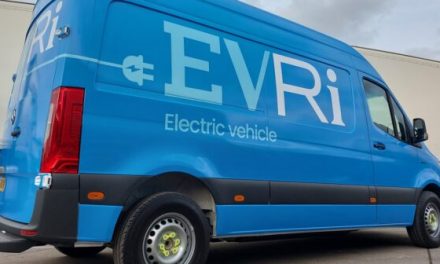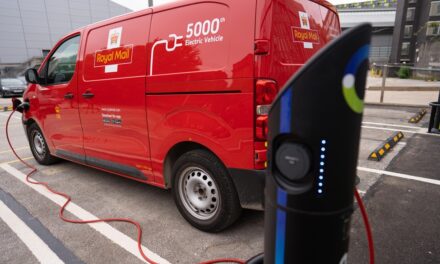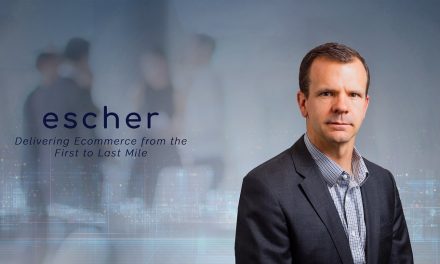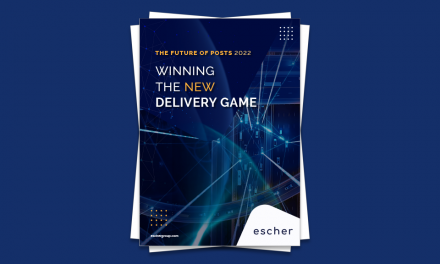
Physical, Meet Digital: Three Digital Trends Set to Redefine the Postal Experience Forever

Wayne Haubner, CTO at Escher explores the three trends that are set to redefine the customer experience at the post office as well as the innovations that are helping Posts embrace them.
This article is an extract from the Winter Edition of MER Magazine published in November 2020. You can read this as well as other articles from MER for free by becoming a member of Post & Parcel today.
“If there’s one thing we’ve all learned this year, it’s this – the world is going digital, and fast. Over the past few years, e-commerce sales continued their upward march and e-retail revenues were expected to hit about US$6.54 trillion by 2022. Then, the pandemic hit.
Households around the world relied on their laptops and smart phones to order everything from food and other basic goods, to medicines, and more. While the rising trend in e-commerce sales will take a slight hit this year because of disrupted supply chains, retail closures, economic uncertainty and of course many other reasons resulting from COVID-19, the overall growth in digital sales is still impressive. And the general rising trend in e-commerce sales will only get stronger.
While the general population shifted their buying preference toward the digital world, what closely followed was a demand for contactless delivery and more contactless customer service options. Although the trend was in place pre-pandemic, it certainly strengthened this year.
Consider the advent of self-service kiosks and smart parcel lockers. These are all contactless, or reduced contact options which customers have been demanding and utilising. We might not have thought about them in those terms, but that’s certainly what they are. So, the pandemic has sped up customer demand for contactless options for sure, however the industry was certainly on this path.
Digital Trends Set to Redefine the Post Office Experience for Customers
While more contactless service options will continue to rise, what are the other trends that are set to redefine the customer experience at the post office?
The Evolving Customer Profile
Before I explore these digital trends, it’s important to note that these trends are all driven by changing customer behaviours, which will influence customer journeys and the post office of the future. Clearly, the pandemic has accelerated many of these preferences, like the desire to opt for digital-first and self-service options. Customers don’t want to wait until Monday morning to deliver their parcel when they could go online Saturday night or Sunday and complete 90% of the work, then simply drop the package off on Monday for delivery at a PUDO location. And of course, there is a clear preference for quick, and real-time service options. Customers want to choose the time and place of service they receive from not just Posts but any retailer or service provider.
As you might expect, these evolving consumer preferences and behaviours that have been put into hyperdrive as a result of the pandemic, have already begun to change the traditional customer journey with the central themes being convenience, accessibility, and supporting online and self-service-based journeys.
Blended Physical & Digital Customer Experiences
A trend that’s gaining momentum is the blending of physical and digital channels. Customers might not describe it as such, but they’ll certainly appreciate the added convenience when more Posts increasingly remove the barriers between physical and digital channels. While the technology innovation exists today to embrace this trend, disparate POS channels – the most likely result of multiple vendor technologies never fully integrated – have left Posts with multiple disconnected physical and digital points of engagement.
Conversely, a blended physical and digital channel environment is one with seamlessly integrated POS infrastructure that transcends today’s widely accepted (but limited) models. Not only are physical and digital channels completely integrated but the customer experience is consistent, intuitive, and above all incredibly simple.
For example, a customer wishing to ship a parcel can begin the process at home online, adding all details on the Post’s self-service web portal, including payment and printing the shipping label. Then the customer simply drops the parcel off through one of the Posts’ many self-serve kiosks or smart lockers for physical delivery at any time of the day. The customer receives receipt of package acceptance and receives real-time updates on the package status, sent to her mobile phone. In this regard, the self-serve kiosks or smart parcel lockers are not viewed as standalone points of engagement, but rather, one of many options for customers along their journey. The entire process is incredibly easy and flawless.
A unified engagement platform, like Riposte, is the core enabling technology that helps Posts fully embrace this trend. Its innovative set of features equips Posts with the ability to add as many physical and digital points of engagement that’s required to meet customer demand and improve customer satisfaction while providing a seamlessly connected experience for customers at every point in their journey, however they decide to define it.
The Virtual Post Office
While the post office itself hasn’t been uploaded to the cloud just yet, it might feel like parts of it have been once this trend unfolds. Building on the previous trend where customers are free to define their own customer journey across both physical and digital channels, we will increasingly see less and less of the traditional brick and mortar post office, and more of its services increasingly available in more places, for longer hours, and on-demand. It’s true that in some countries (Germany is one example), a network of PUDO locations have replaced the traditional post office. Posts can leverage PUDO locations to offer postal services through a retail network of convenience stores, petrol stations, supermarkets and the like. But Posts are looking for ways to embed postal services even deeper across existing retail networks and more seamlessly into the everyday lives of consumers. How can Post’s cost-effectively add postal services across retail environments everywhere?
The innovative solution is to ‘upload’ postal services directly into a retailer’s existing POS system or payment terminal. This way, consumers at any retail establishment can pay for all general merchandise from the store along with postal goods and services, in a single transaction at check out. At their convenience, customers can enter any of these retailers and take care of any number of postal transactions. Overall, costs are lowered for Posts and the retailer, floor space is maximised, and customer experience is dramatically improved.
Escher is helping Posts embrace this trend with its innovative Universal ePOS solution. This same technology pioneered by Escher can also be used to deliver post office on demand service, reaching even more customers. If applied to an existing convenience store chain, then the retailer would be provided with the POS software, hardware, service, and support, enabling any existing retail location to transform into a post office environment overnight. Posts can also set up a temporary post office in the case of a natural disaster, or, alternatively roll out pop-up stores quickly in busy shopping centres during peak season.
While the post office network still requires physical points such as self-serve kiosks, smart parcel lockers, or PUDO locations, customers will certainly appreciate Posts that can offer this digital-like, on-demand or ubiquitous service experience.
Big Data, Better Experience
It’s nice to walk into a post office and be greeted by name, with the clerk knowing exactly what you need. However, this isn’t scalable, nor is it possible in a digital environment. But not to worry, the digital version of understanding your customer is much more interesting.
There is clearly a larger big data trend well underway, but the more noteworthy trend is how to translate big data into better customer experiences. Riposte Customer Satisfaction allows Posts to collect, analyse, and implement postal business insights. This might begin with collecting in-person feedback from the point of sale interaction to determine whether customers are satisfied or whether they had a long wait time. Over time, Posts start to get a portrait of the customer experience. It’s possible then to combine this retail experience data from the point of sale transaction with other transaction data.
Data automatically collected from self-service kiosks, such as how often a customer hits a particular button or how often they cancel and start over, can easily be pulled from self-serve systems with the right solution. This data can be pulled together to improve automated roadmaps and make machines a bit easier to navigate for the customer.
Additionally, facial recognition and voice recognition software can also identify frustration from the customer, helping to further design better experiences.
Similarly, AI and machine learning can help clerks provide more efficient service to the customers wanting to use less common services. The fast growing segment of cross-border shipping, for example, can be a more involved process for clerks and customers alike. AI and machine learning-based solutions can automate much of this process, auto-fill certain fields, and identify the challenges associated with these shipments before running into troubles. Altogether, it creates a more efficient, painless experience for the customer.
Behind the scenes, management teams will be leveraging big data for real-time business updates. Instead of running reports which are instantly outdated, Posts can use software that leverages natural language processing technology, BI and AI to simply ask questions of their data to help make critical business decisions.
Overall, there are many customer-driven trends set to introduce sweeping changes across the postal industry. It will be innovative solutions like the ones I discussed here, that will help Posts to fully embrace these digital-themed trends, improving customer experience in the process. From more online options, to mapping customer journeys, to embedding postal services across existing retail networks everywhere, and leveraging big data more effectively, Posts who embrace these trends will surely reap the rewards of improved efficiencies, higher sales, and customer loyalty.

About the author
Wayne is a pioneering technology executive and change agent who has a track record for driving enduring results through leadership, agility and continuous innovation. Wayne has a proven track record of building world-class customer-centric engineering organisations by fostering a culture of data-driven continuous improvement and collaboration.













